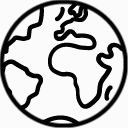The strategic dialogue was initiated in 2016 to explore and manage H&M Group’s and the textile industry’s broader sustainability challenges and possibilities. It was the result of a years-long dialogue on topics such as material selection, biodiversity and water issues and climate change. The strategic dialogues’ main areas were raw materials, innovations and policy & advocacy. Some of the results include a project to support the growing of sustainable rattan and a policy push in Brussels to vouch for stronger regulations on energy efficiency and renewable energy in the EU.
In 2019 H&M Group launched their new biodiversity ambition; to have a net positive impact on biodiversity throughout the value chain, through moving to a circular approach that reduces the need for raw materials, sourcing sustainable materials and through supporting the protection and restoration of biodiversity and natural ecosystems.
In 2020 the partnership formalized the biodiversity stream with the aim to help reduce H&M Groups overall pressures on biodiversity and nature and strive towards net-gain impacts, in line with science. The partnership will address land and water-use impacts of raw material sourcing and production, increase the overall awareness of the importance and urgency to act on biodiversity and nature loss, and scale solutions and action within the textile sector with focus on biodiversity protection, maintenance and recovery.
















